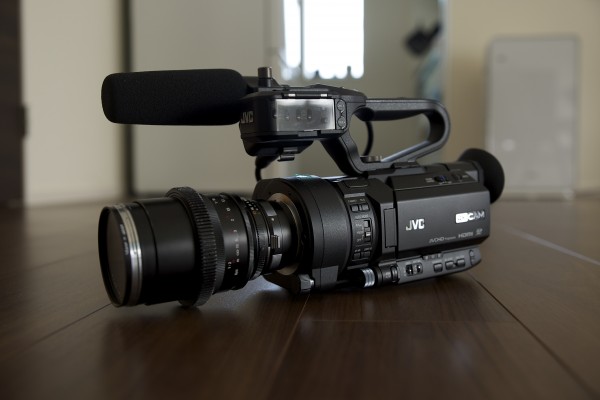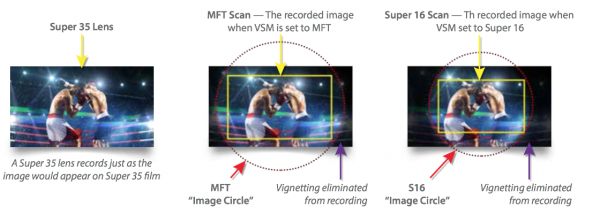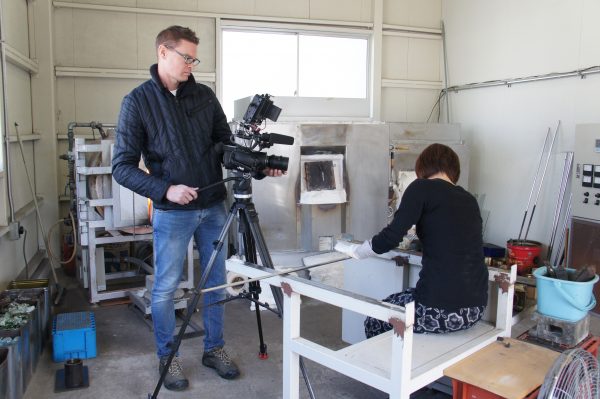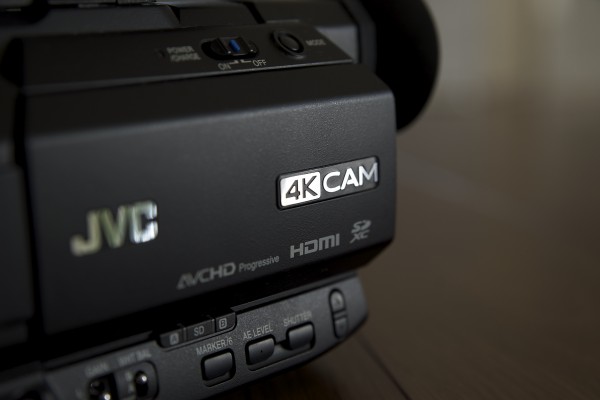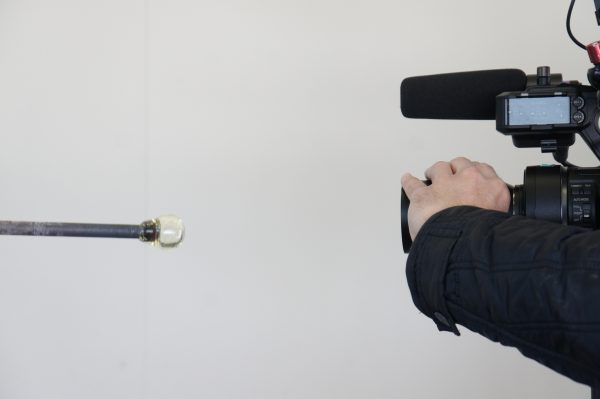By technical editor Matt Allard:
The JVC GY-LS300 is an interesting camera that combines 4K internal recording in a compact, lightweight body. At first glance it strikes me as a cross between a Sony VG-30 and a PDW-150. It certainly is light and weighs in at just 1.7KG. One of the unique features of the camera is that it has a Super-35mm-sized
13.5MP progressive scan CMOS sensor that utilises a Micro 4/3 mount. The camera has built in ND filters, proper audio controls with XLR connections and a good choice of internal codec options. I was keen to put the camera through its paces and JVC gratiously supplied me with a pre production GY-LS300 for a few days to test out.
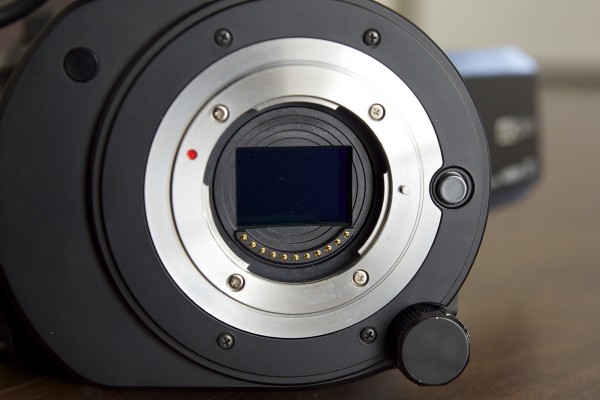
Curiously it has an active Micro 4/3 mount and is supplied body only, without a lens. Almost all lenses made for Micro 4/3 aren’t designed to cover a Super 35mm sized sensor so this choice at first seems to be a strange one. The matching of a Super 35 sensor and Micro Four Thirds (MFT) lens mount makes for a good marriage between nice imagery and affordable glass. Dozens of high quality Micro Four Thirds lenses are readily available and require no adapter. The camera has a short flange focal distance (slightly less than 20mm) and most cinema lenses can be adapted for use. Various mount adapters are available, including PL mount, Canon EF mount, Nikon, and C-Mount. The mount’s electrical connections are compatible with many auto focus, iris and power zoom lenses—even when using an adapter.
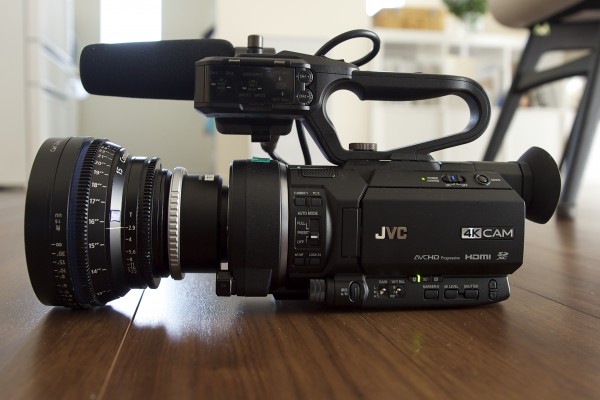
One important difference from most Micro Four Thirds cameras is that the GY-LS300 uses a Super 35 imager—approximately 35% larger than a standard MFT imager. JVC’s mount provides full coverage of the imager meaning that Super 35 lenses may be used without vignetting. For the professional on a budget, having a camera with this design can literally save thousands of dollars in new lens purchases. The GY-LS300 has a technology called Variable Scan Mapping. It involves some cropping and scaling of the sensor depending on what size image the lens is made to cover and what resolution your working in. This way it can utilise not only 4/3 MFT lenses but older Super 16mm lenses as well. Super 16mm lenses will only work when recording HD. How does it work? With the right third-party adapter and lens, VSM intelligently remaps the pixels on the sensor chip in accordance with the native field of view of the lens so that the pixels fill the entire picture frame— thereby eliminating vignetting.
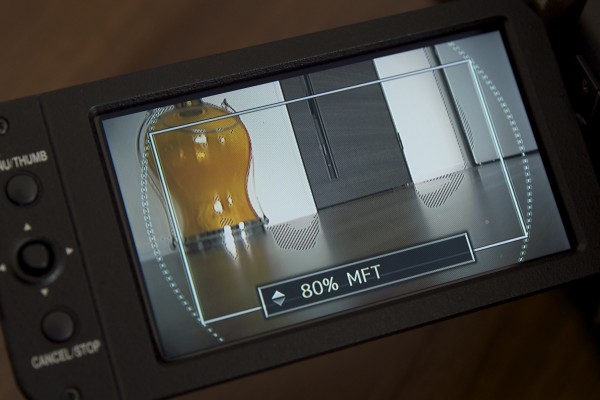
JVC representitives told me the GY-LS300 is not being marketed as a cinema camera. They are targeting the GY-LS300 for use in educational markets, news gathering and as an alternative to conventional DSLR cameras. According to JVC “DSLR cameras simply can’t match the high reliability, long recording time and ergonomics provided by JVC’s GY-LS300. No other removable lens video camera offers this much flexibility in such a compact, easy-to-handle form factor.” I wanted to see how this camera would work in a news and documentary environment, so I took the camera, a Sachtler ACE tripod and just 3 lenses and went out to shoot a real world scenario.
Image Quality:
The camera actually surprised me with the images it produces. While it may not have the most cinematic look on the market I found the images to be very pleasing. JVC claims 12 stops of dynamic range and a base ISO of 400. It certainly is not a low light competitor to cameras such as the Sony a7S or Canon C100 Mark II. You can comfortably work at up to about 1600 ISO but anything over that and the noise pattern starts to look pretty ugly. At its base ISO the camera produces very clean, sharp, detailed images. The above video was shot entirely using available light. I primarily stayed at 400 ISO and a few of the shots were at 800. Most of the material I shot was recorded internally in HD 422 at 50p. There are a handful of shots that were done in UHD. The resolving power of the sensor JVC is using is very good. Below is a short video showing the resolving power the camera is capable of when recording externally to HD ProRes using the 7Q+. I compared the JVC to the Sony a7S. Both cameras were outputting HD. Note: This is not a scientific test, but it was interesting to see the JVC out resolve the Sony.
You can download the original times from the video below here.
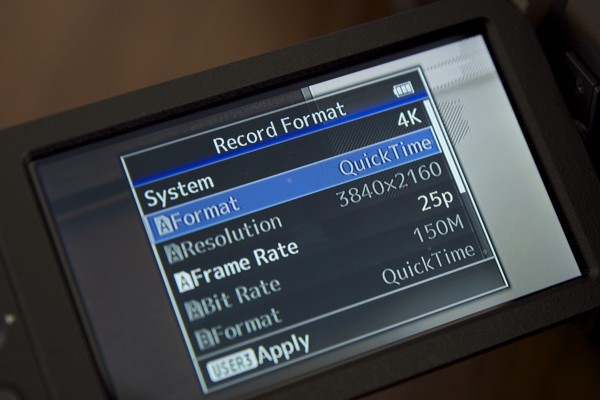
Recording Options:
One of the biggest selling points of the camera is that it can record 4K UHD at frame rates of 24,25 and 30P in a H264 .MOV format at 150Mb/s. In HD you can record 50Mb/s in 4:2:2 at up to 60P in .MOV. AVCHD is also available in the camera. The camcorder supports dual codec recording, allowing you to capture both .MOV and AVCHD simultaneously to its dual SDHC/SDXC media card slots. There is three different ways of recording to the cards.
Series:
Allows you to record onto one SD card and once that card is full it moves seemlesssly to the second. This is available in all modes-4k UHD, HD, SD and Web.
Duel:
You can record simultaneously to two SD cards at once in 4K UHD, HD, SD and Web.
Backup:
A very clever function that allows one SD card to record via start stop triggering while the second card records continuously no matter whether the camera is recording or not. As long as your camera is turned on then it will always be recording. This is a great function for anybody doing news or documentary work where you do not want to miss something. In a war zone or hostile situation you often miss shots because things happen without warning. Being able to leave your camera on have it record can be crucial in capturing unexpected moments. There is also a pre record function that allows you to capture up to 15 seconds in HD and 5 seconds in 4K UHD before you press the record button.
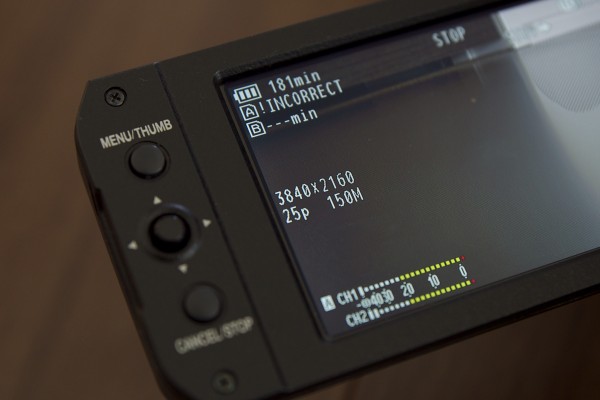
Unfortunately with the pre production GY-LS300 I was testing the brand of card I had wasn’t being recognised by the camera. I mentioned this to JVC and they are currently doing more testing to work out what brands of card will and won’t work. This meant I could not do any testing recording 4K UHD internally. Fortunately the camera does have both a 3G-SDI and a HDMI output. While you can only output HD over SDI you can output 4K UHD over HDMI. Using this path I was able to record UHD to the Convergent Design Odyssey 7Q+. What I also discovered is that you can record 4K UHD internally while outputting HD over the SDI connection which can be very handy.
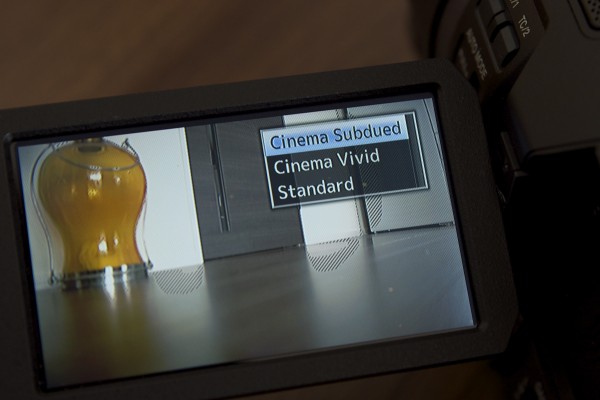
Picture Profiles:
As far as picture profiles go, there are only two choices- Standard and Cinema. At first this looks to be very limiting, but if you dive further into the menu system the GY-LS300 actually allows for a lot of customisation. You can change the Knee, master black level, black toe, gamma, detail and a myriad of other settings to create whatever look you are after. While it is not S-Log or C-log, you can create quite a flat look if you really want to. There is a detailed look at all these choices in the JVC GY-LS300 Menu look video near the bottom of the post.
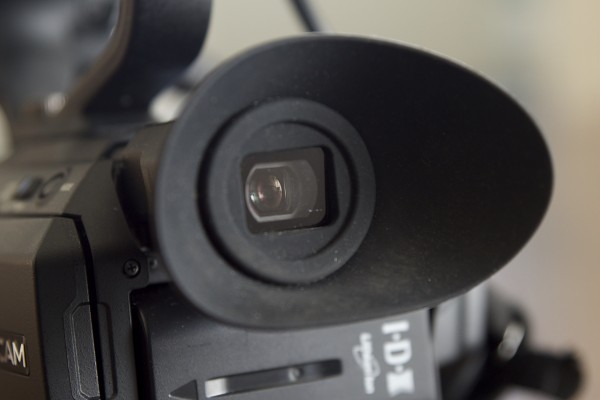
EVF/LCD:
The camera features both a flip out 3.5 LCD viewscreen and flip up EVF at the rear. To be completely honest the rear EVF is a bit of a let down. Having recently tested the C100 Mark II and seen the vast improvement in the EVF quality from its predecessor, the JVC’s just doesn’t measure up. The range of motion is extremely limiting and you need to pull it out to activate it. I found on more than one occasion that when it was up against my eye the weight from my head would push the EVF back in and I would lose the picture. The flip out screen image quality is ok and measures up against most other cameras out there on the market. One thing I did notice though is apart from zebras there are no other exposure assist tools available. Hopefully this is something that can be added with firmware. The focus peaking and assist features work really well and were very easy to use.
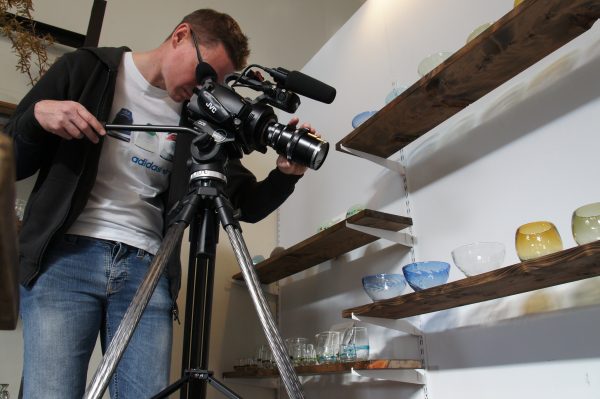
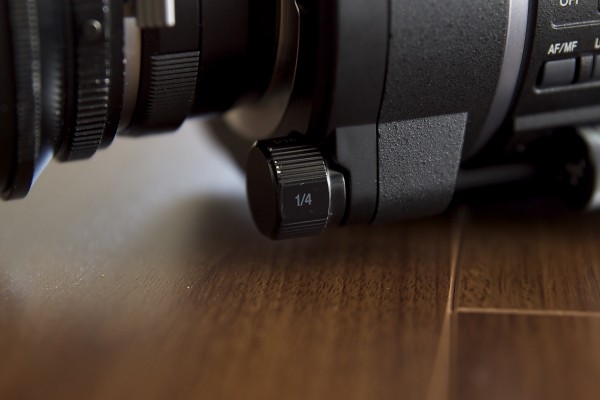
Build Quality:
The camera build quality is fairly average. Strangely enough the material built around the sensor and where the ND filters are located is a lot stronger than the rest of the body. The LCD screen seems fairly robust but as I mentioned before the EVF is quite clumsy to use. The dials all feel very solid and the top handle locks into the body and does not wobble around. There is a cold shoe mount on the top handle and a 1.4 20 thread for mounting accessories.
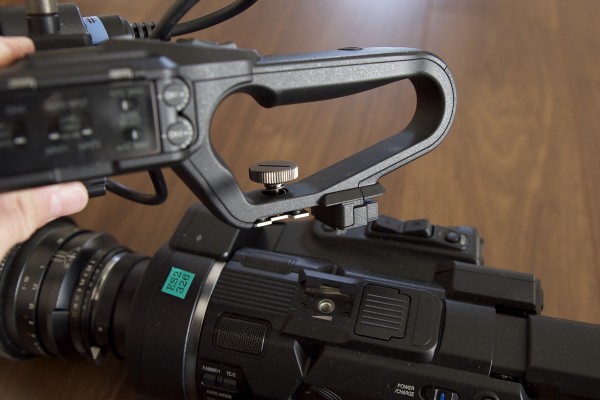
Audio:
A detachable handle provides two XLR audio inputs, each with phantom power. The top handle uses a clever design to attach to the camera’s body. Unlike the Canon C100 Mark II there is no cable required to go from the audio controls to the camera body. All the power and audio signals are conveyed through a type of hot shoe connection that is located inside the camera body. The handle also feels a lot more solid and does not rattle around like the one on the C100 Mark II. If you remove the top handle the camera still has the ability to record audio and it also features built in microphones.
Usability:
As far as usability goes the camera is a little hit and miss. It is extremely light and you could easily hand hold this camera all day long. Unfortunately as I mentioned earlier the poor rear EVF does make it hard to use in this way. Everything else is well thought out and the controls are simple and easy to use. I am still perplexed that camera manufacturers still choose to go with the same old body designs for this size and class of camera. The built in ND filters (Clear, 1/4, 1/16/, 1/64) are conveniently located close to the lens. On the Olympus M 4/3 lens I tested I was pleasantly surprised that the aperture could be electronically controlled very gradually without having annoying incremental jumps. Just how this works with Canon lenses I was not able to test. I really think you need to use an external monitor or a third party EVF to get the best results when using this camera, particularly outdoors.
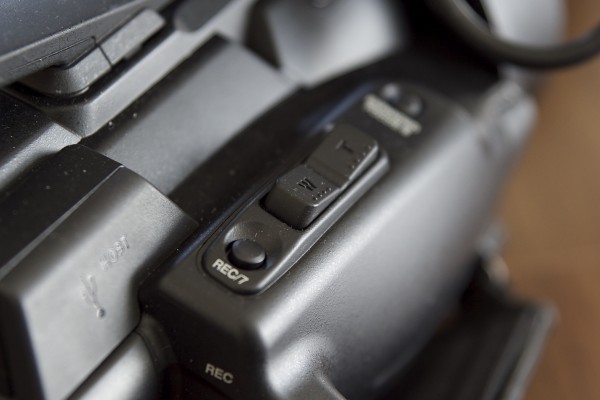
Servo Zoom:
The camera has a built in zoom rocker that can be used in conjunction with Micro 4/3 lenses such as the Panasonic Lumix G X Vario PZ 45-175mm f/4.0-5.6 ASPH
Menu System:
The menu system is fairly easy to use and offer an awful lot of options that you don’t usually find in this price range.
Live Streaming:
One key strength of the GY-LS300 for ENG or event coverage is that it supports wireless streaming to a variety of streaming services like UStream and Youtube, while simultaneously recording HD. It also supports IP network remote control, remote viewing, metadata editing, and FTP transfer of clips across a network using optional network connections and adapters. With F.A.S.T. feed the GY-LS300 is able to stream to the ProHD Broadcaster (BR-800) which can route streams from multiple cameras to various destinations including decoders, content delivery networks (e.g. USTREAM) or other servers. The camera can also be remotely monitored. Optional broadcaster BR-800 actively monitors the quality of the incoming stream(s) and instructs the camera(s) to repeat packets (ARQ) and/or apply forward error correction (FEC). Up to 30% packet loss is corrected, delivering a robust, reliable HD stream in most cases. Stream status is provided to the camera operator with an indication in the viewfinder.Incoming streams can be set to record automatically or at a preset time. Streams may be downloaded, or set for automatic playback later. Zixi error control ensures outstanding image quality. Recorded video streams may also be tagged for video-on-demand (VOD) playback. The VOD menu provides URLs in various streaming formats for outside playback. A single click on the server console brings up the remote control for the connected GY-LS300. Control functions include lens (zoom, focus, iris) and camera settings (gain, shutter, WB, paint, LoLux, etc.) Zoom presets may be registered and triggered remotely. Recording and live streaming may also be triggered remotely — invaluable for minor adjustments when a single reporter is operating the camera.
Conclusion:
The JVC GY-LS300 packs quite a punch for a small camera that will retail for $3,995.00 US. It fills a bit of a void in the market place where a small lightweight Super 35MM camera with proper audio controls. XLR connections and built in ND filters has been missing. Sure you could buy a GH4, a7S, BMCC 4K for less money but none of those cameras give you all the features that the JVC offers. The image quality coming out of the camera is very nice considering its price and who the camera is aimed at. The ability to choose a multitude of different recording options and be able to record them all internally is very impressive. The camera really is a good option for VJ’s, run and gun news and documentary makers and those who want to stay light but still want that Super 35mm look. In war zones or hostile situations like protests, this camera makes a lot more sense to me than using something like a Canon 5D. The GY-LS300 does really make for a good alternative to a DSLR given its level of versatility and included features.
Despite the poor EVF and a few small issues the GY-LS300 offers good value for money and most importantly it delivers on image quality. I think it is a camera that may end up surprising a few people.
Thanks to Aiko Hiraiwa for allowing me to film at Rainbow Leaf studio.

